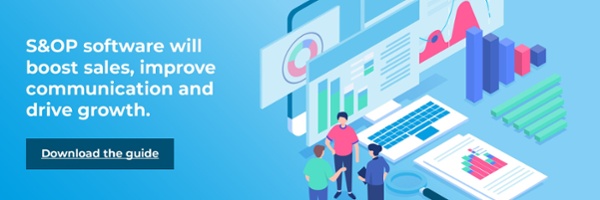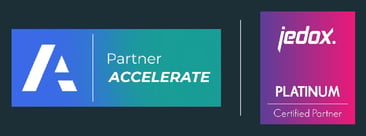Quick reaction times, intelligent and informed decision-making and boosted shareholder confidence - these are some of the benefits you stand to gain from an efficient sales and operational planning (S&OP) process. Utilising S&OP for your business can enhance technical processes across the board, meaning you feel more comfortable, more connected, more adaptable and more secure.
Here are six sales and operations planning examples that reveal the benefits of integrated S&OP software.
1. Kind Consumer
Kind Consumer is a pioneering healthcare research and development company. Using Connected Planning software supplied by Anaplan, they’ve set their sights upon implementing enterprise performance management (EPM) to deliver critical decision-support information.
Kind Consumer now runs scenarios such as ROI evaluation from new territories or marketing campaigns, capitalising upon data provided by suppliers and sellers directly. The organisation can now effectively monitor supply chain performance, sales and profitability.
Robin Pakenham, CFO of Kind Consumer, stated: “This solution will be crucial to securing outside investment. With all key business data in one place and the ability to run bespoke reports, as well as 'what if' scenarios to test assumptions, we can confidently engage in the due diligence required by the investor community.”
2. Zalora
Zalora, a unit of the online retail powerhouse Global Fashion Group, previously relied on siloed spreadsheet-based financial planning.
Spreadsheets can be a burden, both inconvenient, non-integrated and incompatible with the need for dynamic reactive action. Zalora experienced the worst - crashed spreadsheets and a large amount of time spent on both administration and data consolidation.
When they began to utilise an S&OP platform, Zalora found it could integrate many datasets from different sources into a single, universal platform. The days spent consolidating data has been reduced to mere seconds by leveraging not only integrated financial planning and analysis (FP&A) but also supply chain and resource planning as well.
David Inns, the Director of FP&A and Business Intelligence for Zalora, commented on the benefits of using a Connected Planning platform, saying: “Connected Planning enables the owners of the budgets to have an active role in bringing together business plans.”
It’s improved the relationships between business leaders, budgets and planners, increasing their visibility.
3. Carters
An inspiring example of how an S&OP platform solved supply chain issues is Carters, a leading retailer of young children’s apparel in the United States and Canada. Using S&OP, Carters removed four to six days of inventory from its supply chain.
They initially began with supply planning but branched out into demand and capacity planning, eventually capitalising upon the entire S&OP process. “We have definitely seen an improvement in our ability to forecast capacity,” said Wade Latham, the Senior Director of Operations.
“That should help lead to improved service levels, as well as the reduction of expediting expenses. To me, being able to look at demand and supply and the different components of supply and the status that they’re in - whether they’re in inventory, is it in process in the factory, is it in transit?
“Having that visibility into all of our products at one time in one view is very critical. That’s where you can start developing operational KPIs to evaluate inventory turn, look for opportunities to improve service levels. And we now have that ability that we did not have in an easy way prior.”
4. Del Monte
The streamlining of inventory and the maximising of sales opportunities are key issues for any business. Del Monte, the North American food production and distribution company, suffered from disjointed inventory management. Where there’s misalignment in any planning process, you’ll find that lost sales opportunities aren't far behind.
Del Monte experienced this, as well as an excess of inventory. Spreadsheets and inflexible legacy tools made planning processes slow. To save time, inventory averages were used which led to massive discrepancies between forecasts and actual costs.
The business found that through integrating supply and finance processes on a single platform, they could evaluate costs more accurately. Del Monte saw its supply chain process shortened from two weeks to two days - an impressive change.
It’s now easy for them to identify what drives the profitability of a channel, SKU or customer on a monthly basis. Agility comes through visibility and Del Monte’s supply and finance forecasts and planning models have become truly integrated and transparent.
5. Tata Steel
Tata Steel is one of the world’s most geographically diversified steel suppliers in the world. Producing some ten million tonnes of steel per year is a difficult task. It’s even more complex when you use hundreds of spreadsheets to plan your supply chain.
They began to work with an S&OP platform to gain more accurate pricing, procurement and delivery forecasts, with the eventual goal of connecting downstream businesses and offer an integrated service portfolio to its customers. They’re currently benefiting from the single platform software in multiple ways.
“The single source and transparency means we can do things two to three times quicker and more efficiently than we ever did before,” said Ardy Duwel, Head of Commercial Projects. “We will now have much more data around transactions by which we can strengthen our analytical improvement loop.”
6. Circle K
The well-known chain of global convenience stores, Circle K, is another example of sales and operations planning that demands focus. With an international network of over 12,000 locations and management process based on spreadsheets and ERP solutions, it was difficult for them to align their demand and supply forecasting.
“People were doing forecasting in silos,” reveals Magnus Tagtstrom, former Senior Director of Supply Chain Optimisation. “One of my objectives has been to try to connect the dots in the supply chain.
“I think we had good solutions, but people were doing forecasting in silos, so I wanted to connect that planning process end to end.”
Circle K came across the intuitive forecasting and scenario-based planning offered by S&OP software. They realised the dynamic capabilities of such software would be perfect for their needs.
Circle K can now forecast per product and station, visualising where demand will speak upon different times and scenarios. They also benefit from being able to accurately forecast over 18 months of stock levels for all European locations. For a business like Circle K, having knowledge and transparency over their capacity is crucial.
An S&OP platform has enabled them to reduce inventory and also use resources and capital more efficiently.
The collaborative nature of an S&OP software helps to support efficient business planning, allowing any involved parties to assess strategic options thoroughly and effectively.
If you’re interested in gaining a similarly successful experience through the use of S&OP, the first step is to find the right software.
Experience The Benefits of S&OP For Yourself
The best way to benefit is to invest in dedicated S&OP software.
It’s unwise to choose the first option you see. We’ve created a helpful guide to discovering which S&OP software on the market is the right one for your needs. The guide covers the features to look for, the overall benefits of S&OP, how to choose a software and much more.
If you’re looking to reduce costs and increase the transparency and efficiency of your business, click the link below.




